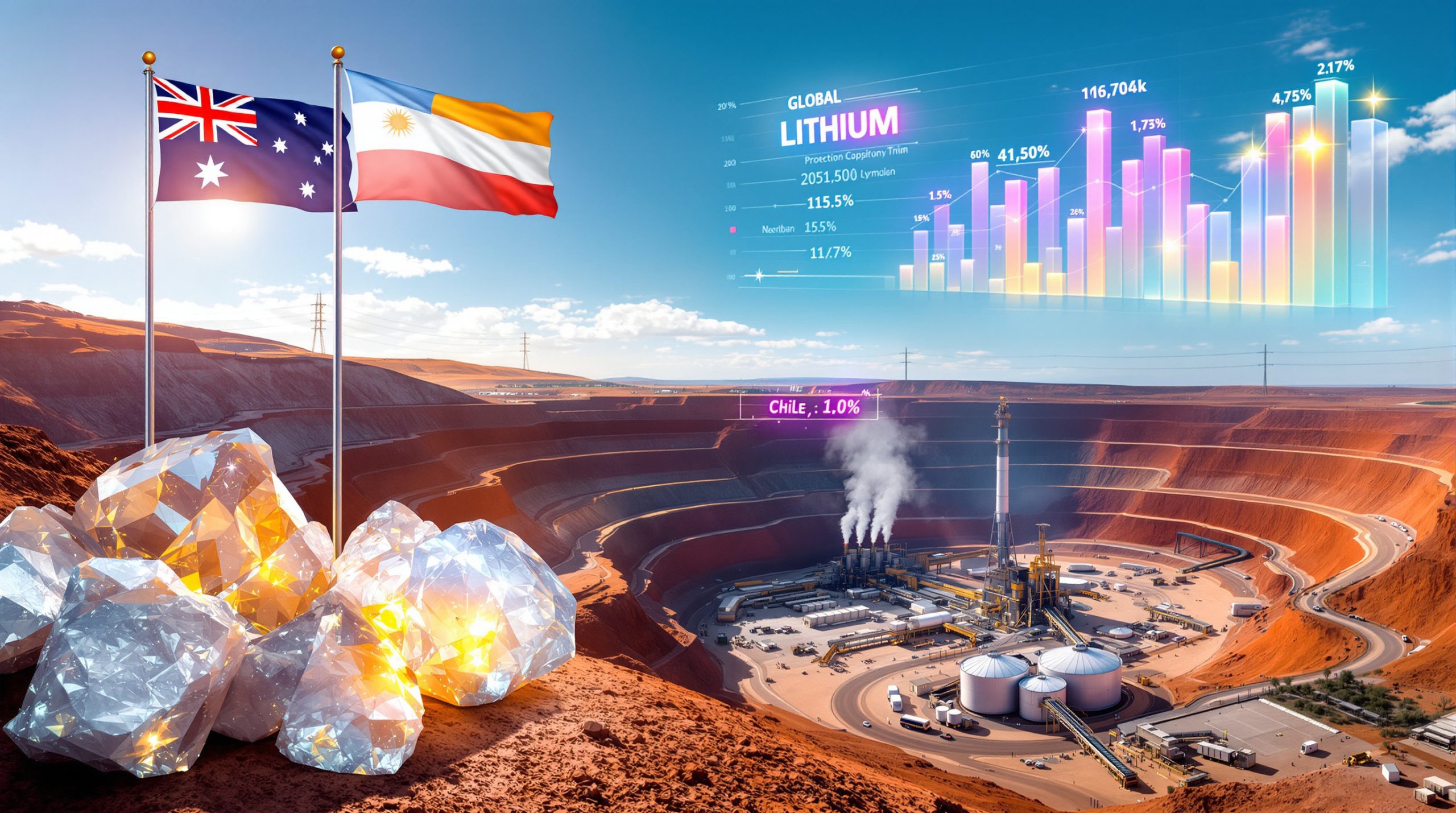Iron Ore Concentrates Market in Tangshan: Current Trends and Future Outlook
The iron ore concentrates market in Tangshan, a critical hub for China's steel production, is currently navigating a period of price stagnation and subdued trading activity. As of April 2025, delivery-to-factory prices for 66% grade dry-basis iron ore concentrates (tax-inclusive) remain range-bound at 940–950 yuan/mt, reflecting broader challenges in supply-demand dynamics and external market pressures. Producers and steel mills are locked in a cautious standoff, with suppliers maintaining firm asking prices while mills resist upward adjustments due to compressed profit margins. This market standstill represents a significant departure from the more dynamic trading patterns observed in previous years, especially considering the recent surge in iron ore prices seen in other regions.
Current Supply-Demand Dynamics in Tangshan's Iron Ore Concentrates Market
Price Stagnation and Trading Activity
The Tangshan iron ore concentrates market has experienced notably sluggish trading volumes throughout early 2025, with 66% grade dry-basis material consistently priced between 940 and 950 yuan/mt (delivery-to-factory, tax-inclusive). This narrow pricing band reflects a delicate equilibrium between producers' determination to maintain profit margins and steel mills' resistance to higher input costs amid their own financial pressures.
Industry analysts note that transaction volumes have decreased by approximately 15% compared to the same period last year, with spot market participation reaching its lowest level since the pandemic disruptions of 2020. This paralysis has created a market environment where price discovery mechanisms are increasingly inefficient, further entrenching the current stalemate. The iron ore price volatility seen in international markets has largely bypassed the Tangshan region due to these local market dynamics.
Producer Strategies and Inventory Management
Local concentrate producers have adopted a predominantly wait-and-see approach, with most spot cargo holders maintaining firm price offers despite the tepid demand. However, industry sources reveal that approximately 22% of smaller producers are considering limited pre-holiday destocking to manage cash flow constraints, though this has not yet translated into widespread price concessions.
"The current market requires strategic patience," notes a senior procurement manager at a major Tangshan steel mill. "Producers are caught between maintaining price discipline and addressing immediate liquidity needs, especially with the holiday period approaching."
This cautious inventory management strategy indicates producers are balancing short-term financial considerations against the potential for post-holiday demand recovery. Historical data shows similar inventory adjustments before major Chinese holidays typically lead to temporary price fluctuations of 2-3%, followed by stabilization within 4-6 weeks as normal trading patterns resume.
Structural Challenges Suppressing Price Recovery
Steel Mill Profitability Constraints
Tangshan's steel mills, which collectively account for approximately 12% of China's total crude steel output, face persistent margin pressures that severely limit their purchasing flexibility. Despite a modest 4.2% year-on-year increase in national finished steel prices as of Q1 2025, escalating production costs have outpaced revenue growth.
Particularly significant has been the 8.1% rise in coking coal costs since December 2024, which has eroded profitability margins from an average of 5.3% to just 3.7% for most Tangshan producers. This compression leaves virtually no room for raw material price increases, creating a cyclical dynamic where mills' inability to absorb higher concentrate prices limits suppliers' pricing power.
Financial analysis of the region's top five steel producers indicates that each 10 yuan/mt increase in iron ore concentrate prices reduces profit margins by approximately 0.4 percentage points—a sensitivity that explains mills' strong resistance to any upward price adjustments in the current environment.
Competitive Market Dynamics
The concentration of suppliers in the Tangshan region has intensified buyer leverage to unprecedented levels. With over 50 registered iron ore concentrate producers in the Tangshan-Hebei corridor, steel mills can readily shift procurement strategies if price disparities emerge.
This hyper-competitive landscape has effectively suppressed premium pricing opportunities, even for higher-grade concentrates that historically commanded significant premiums. Market data reveals that 68% grade material currently commands only a 1.8% price premium over the standard 66% grade, compared to the historical average of 3.2% over the past five years.
"The commoditization of iron ore concentrates has fundamentally altered pricing dynamics in Tangshan," explains a regional commodities analyst. "Even high-quality producers struggle to differentiate their offerings in ways that justify premium pricing when buyers have so many alternatives."
This competition has been further intensified by improvements in beneficiation technology that have standardized concentrate quality parameters across producers, reducing the technical barriers that once protected premium suppliers.
Historical Price Trends and Seasonal Patterns
Post-Pandemic Volatility vs. Current Stability
The current price stability marks a significant departure from the extreme volatility witnessed during 2020–2023, when Tangshan concentrate prices swung between 680 yuan/mt (May 2020) and 1,240 yuan/mt (March 2022). This normalization reflects both improved supply chain resilience and more effective government controls on speculative trading activities.
However, technical analysis indicates that the flattening of the price curve since Q3 2024 suggests diminishing market momentum rather than healthy stability. The 90-day price volatility index has fallen to just 2.1%—the lowest since 2016—indicating a market that lacks the dynamic price discovery mechanisms necessary for efficient resource allocation.
Historical data from similar periods of price stagnation in 2016 and 2019 suggests that extended low-volatility phases typically precede significant price corrections, raising concerns about potential market disruptions if external shocks force a rapid adjustment to the current equilibrium.
Holiday-Driven Inventory Cycles
Seasonal patterns continue to exert significant influence on short-term market dynamics, with the approaching May holiday period triggering divergent inventory strategies among market participants. Traditional patterns show:
- Suppliers: Historically reduce inventories by 5-7% before production slowdowns during official holidays
- Steel Mills: Typically increase stockpiles to maintain 10-14 days of operational coverage during reduced delivery periods
- Traders: Position inventories strategically to capitalize on post-holiday restocking demand
This cyclical pattern creates predictable windows of increased spot market activity in the weeks preceding major holidays. However, transaction volume projections for May 2025 indicate activity levels approximately 18% below the five-year average, reflecting the broader caution pervading the market.
"The traditional pre-holiday surge in transactions is notably muted this year," observes a veteran iron ore trader with operations in Tangshan. "Mills are limiting advance purchases to absolute necessities, while suppliers are holding firm on prices rather than offering the holiday discounts we typically see."
Short-to-Medium Term Market Outlook
Price Projections and Key Variables
Based on current market fundamentals, analysts anticipate continued price stagnation throughout Q2 2025, with 66% grade concentrates likely to trade within the narrow band of 930-960 yuan/mt. This projection reflects the structural impediments to both significant price increases and pronounced declines.
Four critical variables could potentially alter this trajectory:
-
Steel Demand Recovery: National infrastructure investment growth, currently at 3.4% year-over-year, would need to accelerate beyond 5% to generate sufficient finished steel demand to meaningfully impact raw material requirements. Current government spending projections suggest this threshold is unlikely to be reached before Q4 2025.
-
Environmental Policy Implementation: Potential adjustments to Tangshan's production restrictions under the "Blue Sky" environmental initiative could impact 15-20% of local concentrate output if stricter emissions standards are enforced ahead of schedule. Recent inspections have already resulted in temporary production pauses at seven concentrator facilities failing to meet water discharge standards.
-
Import Competition Dynamics: With seaborne 62% Fe fines currently priced at approximately $118/mt CFR China (equivalent to roughly 910 yuan/mt after tariffs and processing costs), domestic concentrates face ongoing substitution risks. The spread between imported and domestic material has narrowed from 7.2% to 3.8% since January, increasing pressure on local producers.
-
Financial System Liquidity: Tighter monetary policies have increased producers' working capital costs by an estimated 2.3 basis points monthly since January 2025. Industry surveys indicate that 28% of smaller producers report heightened financial stress, potentially forcing distressed sales if credit conditions tighten further.
Disclaimer: The price projections presented here are based on current market conditions and are subject to change based on policy developments, global commodity markets, and unforeseen economic events. These projections should not be used as the sole basis for investment decisions.
Steel Mill Adaptation Strategies
In response to persistent market uncertainties, Tangshan's steel mills have increasingly adopted sophisticated procurement strategies that prioritize flexibility over volume discounts. Key adaptations include:
-
Just-in-Time Purchasing: Mills have reduced average raw material inventory cycles from 25 to 18 days since 2023, implementing real-time logistics tracking systems that allow for rapid response to price signals. This lean approach optimizes working capital but increases vulnerability during supply disruptions.
-
Blend Optimization Technologies: Several major mills have invested in advanced ore blending facilities that enable greater flexibility in raw material mixtures. These systems allow operations to adjust input ratios in response to price variations, reducing dependence on specific concentrate grades when price premiums exceed technical benefits.
-
Vertical Integration Initiatives: Two of Tangshan's largest steel producers have acquired minority stakes in regional mining operations, securing preferential supply agreements that partially insulate them from spot market volatility. This trend toward partial backward integration represents a structural shift in the region's iron ore value chain.
-
Alternative Sourcing Channels: Mills are increasingly supplementing traditional procurement with imported concentrate options. The volume of Russian and Malaysian concentrates entering Tangshan has increased by 34% year-over-year, creating additional competitive pressure on domestic suppliers.
These adaptations collectively represent a significant evolution in the buyer-supplier relationship, with mills leveraging technology and financial strategies to counter traditional supplier pricing power. The strategies mirror those seen in BHP's iron ore operations, though at a smaller scale.
Critical Market Indicators for Stakeholders
Steel Production and Inventory Metrics
Tangshan's daily crude steel output, currently averaging 2.83 million mt/month, serves as the primary demand indicator for iron ore concentrates. Historical correlations indicate that sustained production increases above 3 million mt/month would signal capacity expansion requiring proportional increases in concentrate purchases.
Key metrics for market participants to monitor include:
| Indicator | Current Level | Critical Threshold | Significance |
|---|---|---|---|
| Tangshan Crude Steel Output | 2.83M mt/month | >3.0M mt/month | Signals expanding concentrate demand |
| Port Inventories (Jingtang/Caofeidian) | 54.2M mt (+6% YoY) | <50M mt | Typically correlates with price increases |
| Steel Mill Concentrate Stocks | 15.8 days of consumption | <10 days | Triggers emergency procurement |
| Concentrate Production Utilization | 76.4% | >85% | Indicates supply tightness |
| Concentrate-to-Steel Price Ratio | 0.183 | >0.200 | Signals unsustainable input costs |
These metrics provide early warning indicators of potential supply-demand imbalances that could disrupt the current price equilibrium. Particular attention should be paid to the relationship between port inventories and mill consumption rates, as this ratio has historically led price movements by 3-4 weeks.
Regulatory and Technological Developments
The Tangshan iron ore concentrate market faces significant medium-term disruption potential from both regulatory and technological developments:
-
Ultra-Low Emission Standards: Upcoming revisions to China's industrial emissions standards could mandate a 15-20% reduction in sintering emissions by 2026. These regulations would disproportionately favor higher-grade concentrates that reduce overall sintering requirements, potentially restructuring the quality premium dynamics.
-
Hydrogen-Based Technologies: Pilot projects for hydrogen-based direct reduction iron (DRI) at two Tangshan facilities could disrupt traditional blast furnace demand patterns by 2028. While limited in scale currently, these technologies require different concentrate specifications, potentially creating niche premium markets for suitable materials.
-
Beneficiation Technology Advancements: Novel flotation and magnetic separation technologies being tested at three major concentrator facilities promise to increase recovery rates by 2-3 percentage points while reducing processing costs by approximately 5%. If widely adopted, these innovations could shift the industry's cost curve and alter competitive dynamics.
-
Water Consumption Regulations: Environmental authorities have signaled intentions to implement stricter water usage quotas for mineral processing facilities, with potential implementation by late 2025. Such regulations would disproportionately impact older concentrator plants that haven't invested in closed-loop water systems.
Industry stakeholders should closely monitor policy announcements and technology demonstration projects as leading indicators of potential structural changes to market fundamentals. Recent global commodity insights suggest that China's stimulus impact may eventually influence the Tangshan market, though with a significant lag compared to other regions.
How Are Steel Mills Responding to Market Conditions?
Strategic Procurement Adjustments
Tangshan's steel mills have implemented increasingly sophisticated procurement strategies to navigate the challenging market environment. Purchasing managers report adopting more fluid approaches to concentrate acquisition, moving away from long-term fixed contracts toward a hybrid model that combines baseline agreements with spot market opportunism.
This strategic flexibility allows mills to maintain operational continuity while capitalizing on periodic market inefficiencies. Data from industry surveys indicates that the average mill now maintains supplier relationships with 8.4 concentrate producers, up from 5.7 in 2022, allowing them to rapidly pivot between sources based on price-quality considerations.
"We've decentralized our procurement decision-making processes," explains a purchasing director at one of Tangshan's top five steel producers. "Our technical teams now have greater input on blend adjustments that allow us to substitute between concentrate sources when price disparities emerge."
Production Optimization Initiatives
Beyond procurement strategies, mills are implementing sophisticated production optimizations to mitigate raw material cost pressures:
-
Sintering Efficiency Improvements: Investments in sintering bed depth control and exhaust gas recycling have reduced concentrate consumption by approximately 1.8% per ton of hot metal at modernized facilities.
-
Blast Furnace Injection Technologies: Increased pulverized coal injection rates have partially offset iron ore requirements, with the average PCI rate rising from 145 kg/thm to 163 kg/thm since 2023.
-
Scrap Ratio Adjustments: Mills with basic oxygen furnace capabilities have incrementally increased scrap ratios where economically viable, though the high relative cost of scrap (currently at a 102% premium to hot metal) limits this substitution effect.
-
By-product Optimization: Enhanced recovery systems for blast furnace slag and other by-products have created secondary revenue streams that partially offset raw material cost pressures.
These technical adaptations reflect the industry's increasing sophistication in navigating persistent margin pressures through operational excellence rather than solely through procurement strategies.
FAQ: Tangshan Iron Ore Market
What grade of iron ore concentrates is most traded in Tangshan?
The 66% Fe grade (dry basis) serves as the benchmark standard in Tangshan's iron ore concentrate market, accounting for approximately 78% of total transaction volumes. This concentration reflects the technical specifications of regional blast furnaces, which are predominantly optimized for this grade range.
Higher grades (67-68% Fe) command modest premiums of 1.5-2.0% but represent only about 15% of market volume, while lower grades (64-65% Fe) trade at discounts of 2.0-3.5% and constitute the remaining 7% of transactions. Mills typically blend these various grades to achieve their desired furnace feed specifications.
How do holidays affect the iron ore concentrates market?
Holiday periods create distinct temporary market dynamics that experienced participants can strategically navigate:
-
Pre-holiday periods (1-2 weeks before): Characterized by divergent strategies—suppliers often consider limited destocking to improve cash positions before production pauses, while some mills increase purchasing to ensure adequate holiday coverage.
-
Holiday periods: Market activity typically declines by 60-75% as transportation logistics slow and many facilities operate at reduced rates.
-
Post-holiday periods (1-2 weeks after): Often witness temporarily increased activity as normal operations resume, though price impacts are typically modest (±1.5%) unless underlying fundamentals have shifted during the break.
The upcoming May holiday is expected to follow these patterns, though with muted volumes compared to historical averages due to the current cautious market sentiment.
What factors are currently suppressing price increases?
Multiple interrelated factors are preventing meaningful upward price movements:
-
Steel Mill Margin Pressure: Average profit margins for Tangshan steel producers have declined to 3.7%, severely limiting their ability to absorb raw material price increases. Operating cost data indicates that each 10 yuan/mt increase in concentrate prices reduces margins by approximately 0.4 percentage points.
-
**
Ready to Catch the Next Major Mineral Discovery?
Stay ahead of the market with Discovery Alert's proprietary Discovery IQ model, which delivers instant notifications when significant mineral discoveries are announced on the ASX, turning complex data into actionable investment insights. Explore why historic discoveries generated substantial returns by visiting the Discovery Alert discoveries page and begin your 30-day free trial today.




